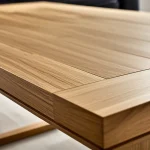Essential Ingredients and Tools for an Authentic Cornish Pasty
To create a truly authentic Cornish pasty, selecting the right traditional ingredients is paramount. The core filling consists of diced beef skirt steak, finely chopped potatoes, swede (rutabaga), and onions. These are combined in balanced proportions to achieve the signature hearty and savory flavor. Using fresh, quality produce is crucial; potatoes should be firm, and swede should not be overly ripe to maintain texture during baking.
When preparing the ingredients, uniform slicing is essential for even cooking and consistent texture. Precision in cutting the beef into bite-sized cubes ensures tenderness, while similar-sized vegetables prevent any component from under- or over-cooking.
In parallel : What are some traditional British vegetarian dishes to try?
For tools, a sturdy sharp knife is indispensable for prepping both meat and vegetables. A reliable pastry cutter or rolling pin helps achieve the ideal thickness for the shortcrust or rough puff pastry traditionally used. Additionally, a mixing bowl large enough to hold the filling ingredients for thorough seasoning and mixing is necessary. Having a baking sheet lined with parchment paper avoids sticking and promotes even baking.
These foundational ingredients and tools underpin the process of making Cornish pasties at home that honour tradition and deliver satisfying results.
Have you seen this : What Are the Traditional Ingredients in Iconic UK Dishes?
Preparing the Filling: Slicing, Seasoning, and Combining
Preparing the Cornish pasty filling correctly is crucial for authentic pasty flavor. The key lies in precise slicing: beef skirt steak should be cut into small, uniform cubes to ensure tenderness, while potatoes, swede, and onions must be diced evenly to cook at the same rate. This avoids undercooked or mushy bits in the finished pasty.
When seasoning, a simple mix of salt and freshly ground black pepper suffices. Over-seasoning can overpower the subtle balance between the meat and vegetables that defines the authentic pasty preparation. Mixing the filling thoroughly ensures even distribution of flavors, but be cautious not to overwork the ingredients as this can break down their texture.
For best results in making Cornish pasties at home, combine the ingredients gently in a large bowl. Use a spoon or lightly toss with your hands to blend the components without crushing them. Remember, the filling should remain distinct so each bite delivers a satisfying medley of textures and flavors. Achieving this balance takes a bit of practice but is essential for a traditional and delicious pasty.
Making the Perfect Pastry for Cornish Pasties
Creating the Cornish pasty pastry is a cornerstone of making Cornish pasties at home. Traditionally, either shortcrust or rough puff pastry is used. Shortcrust offers a sturdy, crumbly texture that holds the filling well, while rough puff gives a lighter, flakier bite but requires more careful handling to maintain structure.
The process begins by combining cold diced butter with sieved flour, ensuring the fat remains solid to achieve a flaky pastry. Gradually add cold water, mixing gently until the dough just comes together—overworking will develop gluten, making the pastry tough instead of tender. After forming a ball, wrap the dough and refrigerate it for at least 30 minutes to relax the gluten and ensure easier rolling.
When rolling the pastry, aim for about 3-4 mm thickness, which balances structural strength and a pleasant, tender bite. Too thin, and the pasty risks tearing; too thick, and it becomes doughy. To achieve the signature texture, keep your work surface lightly floured and avoid excessive handling.
Following these pasty dough preparation steps carefully enables you to craft authentic pasties that deliver an excellent balance of flakiness and firmness, essential for a satisfying eating experience.
Essential Ingredients and Tools for an Authentic Cornish Pasty
Creating a genuine Cornish pasty starts with selecting staple traditional ingredients: diced beef skirt steak, firm potatoes, swede (rutabaga), and onions. These core elements provide the signature robust flavor and hearty texture fundamental to pasties. Using fresh, high-quality produce helps preserve texture during baking; for example, choosing firm potatoes prevents sogginess, while moderately ripe swede maintains bite without overpowering the filling. The pastry envelope, traditionally shortcrust or rough puff, encases these ingredients, offering either a crumbly sturdiness or delicate flakiness depending on preference.
Proper preparation also demands specific Cornish pasty tools. A sharp knife is essential for uniformly dicing ingredients to ensure even cooking and consistency in texture. A rolling pin or pastry cutter is necessary to achieve the ideal pastry thickness of 3-4 mm, balancing durability with a tender bite. Additionally, a spacious mixing bowl facilitates gentle but thorough combining of filling ingredients, preserving texture while ensuring seasoning is evenly distributed. Baking trays lined with parchment paper assist in even cooking and ease of removal.
Mastering these foundational ingredients and tools is a decisive step for anyone passionate about making Cornish pasties at home that truly reflect Cornish culinary tradition.
Essential Ingredients and Tools for an Authentic Cornish Pasty
Achieving an authentic Cornish pasty begins with selecting the correct Cornish pasty traditional ingredients: diced beef skirt steak, firm potatoes, swede (rutabaga), onions, and high-quality pastry. Each ingredient must be fresh to maintain the hearty texture and flavor that define the pasty. When preparing these ingredients, uniform sizes for beef cubes and vegetable pieces are essential for even cooking.
For making Cornish pasties at home, having the right Cornish pasty tools is crucial. A sharp knife ensures precise dicing, which affects cooking consistency. A rolling pin or pastry cutter helps attain the perfect 3-4 mm pastry thickness, balancing durability with tenderness. Additionally, a spacious mixing bowl allows gentle combining of filling ingredients, preserving texture while ensuring seasoning is evenly dispersed.
Other useful tools include a baking tray lined with parchment paper to prevent sticking and promote even baking. Selecting and preparing ingredients carefully, combined with using appropriate tools, forms the foundation of successful pasty-making. This combination guarantees the authentic flavor and texture central to traditional Cornish pasties, making home preparation both achievable and rewarding.
Essential Ingredients and Tools for an Authentic Cornish Pasty
Selecting correct Cornish pasty traditional ingredients plays a vital role in making Cornish pasties at home that respect the authentic taste. The filling demands tender, diced beef skirt steak, alongside evenly sized chunks of firm potatoes, swede, and onion. These elements must be fresh and cut uniformly to cook evenly and preserve the signature texture. Overly ripe vegetables or uneven cuts risk compromising the hearty, robust flavor the pasty is known for.
In terms of Cornish pasty tools, a sharp knife is indispensable for precise dicing of meat and vegetables, which affects cooking and texture consistency. To roll out the pastry to the ideal 3-4 mm thickness, a quality rolling pin or pastry cutter is recommended, ensuring structural integrity and tenderness. A roomy mixing bowl helps combine ingredients gently but thoroughly, preserving texture and ensuring even seasoning distribution.
Additionally, a baking sheet lined with parchment paper is essential for preventing sticking and promoting consistent heat during baking. Using the right traditional ingredients with proper Cornish pasty tools ensures a successful result when making Cornish pasties at home—one that honors the culinary heritage.




